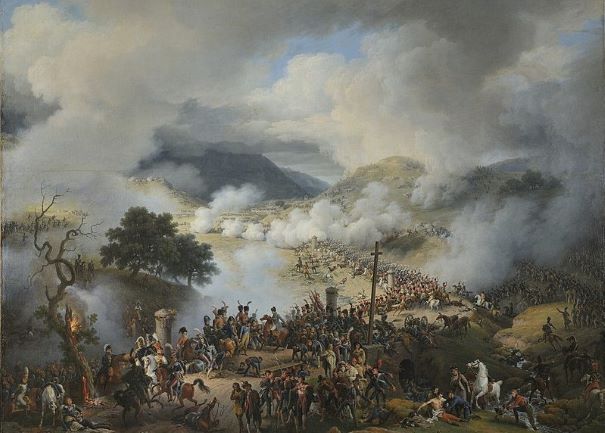The Spanish War of Independence started in Spain with the Dos de Mayo Uprising on 2 May 1808 in Madrid and spread across the country. The Spaniards revolted because they saw Ferdinand VII as the successor of Charles IV.
Everywhere the Spaniards could resist the French armies, they established provincial ‘Juntas’. These Juntas were made up of secular and ecclesiastical dignitaries. As such, they formed a government in the name of Ferdinand VII, who was imprisoned in France.
The Juntas opposed each other more than they worked together and mainly pursued their own regional interest. Consequently, Seville and Granada almost even got involved in a war. However, to avoid total anarchy, the provincial Juntas united into a central Junta. This became a conservative body that opposed the sale of ecclesiastical land, wanted to restore the Inquisition abolished by Napoleon and applied censorship. This central Junta rejected Napoleon’s constitution and, as an alternative, reinstated the medieval Cortes (a sort of parliament, abolished under the absolutist Habsburgs).
Strong resistance against Napoleon
Napoleon encountered much opposition in Spain, the country was very vast and the insurgents used effective guerrilla tactics. In November 1808, Napoleon himself came at the head of a 135,000-strong army to put things in order. One by one, the French took possession of the important Spanish cities, despite fierce resistance from the insurgents. Legend has it that as a protest, the starving people of Zaragoza threw back the loaves of bread the French had thrown over the city wall.
The Cortes in Cádiz and the constitution
The central Junta had its initial base in Aranjuez. However later, under pressure from Napoleon’s armies, it moved south to Seville and then further south to the enclave of Cádiz. This was the only piece of Spanish territory outside Napoleon’s influence and the main port for Spain’s colonial trade.
In Spain, the ideas of the French Revolution mainly found a breeding ground among the Liberals. However, they also opposed the French occupation of Spain. The Cortes in Cádiz was characterised by strong divisions between liberals and conservatives. The liberals were relatively over-represented in the Cortes of Cádiz. Under their influence, a decidedly liberal constitution was adopted in March 1813. Liberal given the Spanish situation, but also by European standards.
Sovereignty
This constitution placed sovereignty with the people (with a veto right for the king). Therefore, a form of universal suffrage was introduced, and aristocratic privileges were abolished. Freedom of the press and civil rights were guaranteed. The Inquisition was ended although the Catholic Church remained the only officially recognised church. Understandably, this constitution caused a lot of resistance among the nobility and the Catholic Church.
La Pepa
The year 2012 commemorated the 200th anniversary of the promulgation of this first Spanish Constitution (La Pepa). Considered as the most progressive in Spain’s history, allegedly even more progressive than the current 2022 constitution.
Defeat for French army
In this context and in addition to his fight against the rebellious Spanish population, Napoleon had major military problems in his war against Russia. This forced him to move armies from Spain to the Russian front, something that is already an unfortunate manoeuvre in the board game “Risk”.
In 1813 the French army was defeated at Vitoria in northern Spain with the help of the English and Portuguese navy, led by the Duke of Wellington. Consequently, Napoleon recognised Ferdinand as king and allowed him in 1814 to return to Spain. This ended the Spanish War of Independence.


